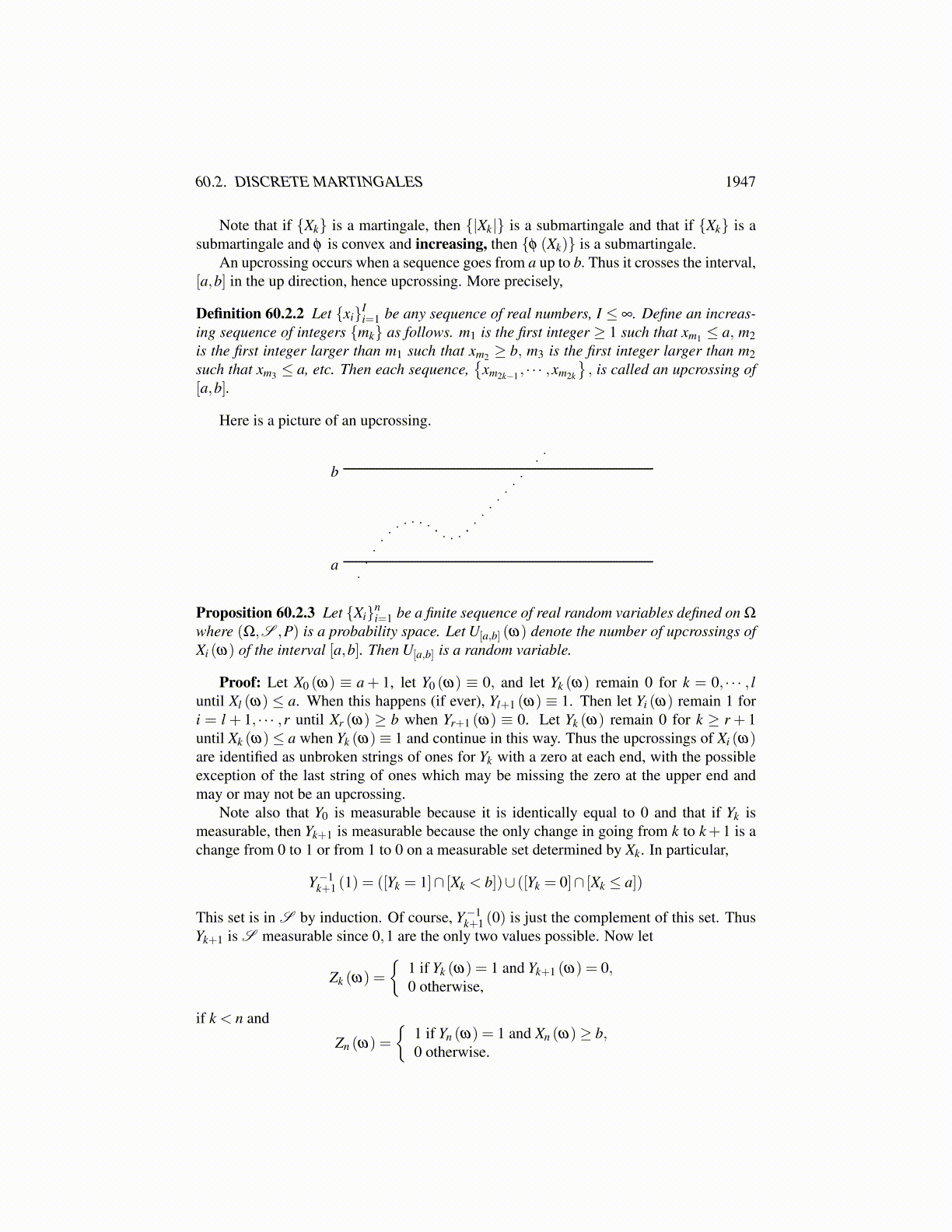
60.1. CONDITIONAL EXPECTATION 1947
Therefore t→ φ(t)−φ(x)t−x is increasing if t > x. If t < x
φ (x+λ (t− x))−φ (x)λ (t− x)
≥ φ (x)(1−λ )+λφ (t)−φ (x)λ (t− x)
=φ (t)−φ (x)
t− x
and so t→ φ(t)−φ(x)t−x is increasing for t ̸= x. Let
ax ≡ inf{
φ (t)−φ (x)t− x
: t > x}.
Then if t1 < x, and t > x,
φ (t1)−φ (x)t1− x
≤ ax ≤φ (t)−φ (x)
t− x.
Thus for all t ∈ I,φ (t)≥ ax (t− x)+φ (x). (60.1.3)
The continuity of φ follows easily from this and the observation that convexity simplysays that the graph of φ lies below the line segment joining two points on its graph. Thus,we have the following picture which clearly implies continuity.
Lemma 60.1.4 Let I be an open interval on R and let φ be a convex function defined on I.Then there exists a sequence {(an,bn)} such that
φ (t) = sup{ant +bn,n = 1, · · ·} .
Proof: Let ax be as defined in the above lemma. Let
ψ (x)≡ sup{ar (x− r)+φ (r) : r ∈Q∩ I}.
Thus if r1 ∈Q,
ψ (r1)≡ sup{ar (r1− r)+φ (r) : r ∈Q∩ I} ≥ φ (r1)
Then ψ is convex on I so ψ is continuous. Therefore, ψ (t)≥ φ (t) for all t ∈ I. By 60.1.3,
ψ (t)≥ φ (t)≥ sup{ar (t− r)+φ (r) ,r ∈Q∩ I} ≡ ψ (t).
Thus ψ (t) = φ (t) . Let Q∩ I = {rn}, an = arn and bn =−arnrn +φ (rn).